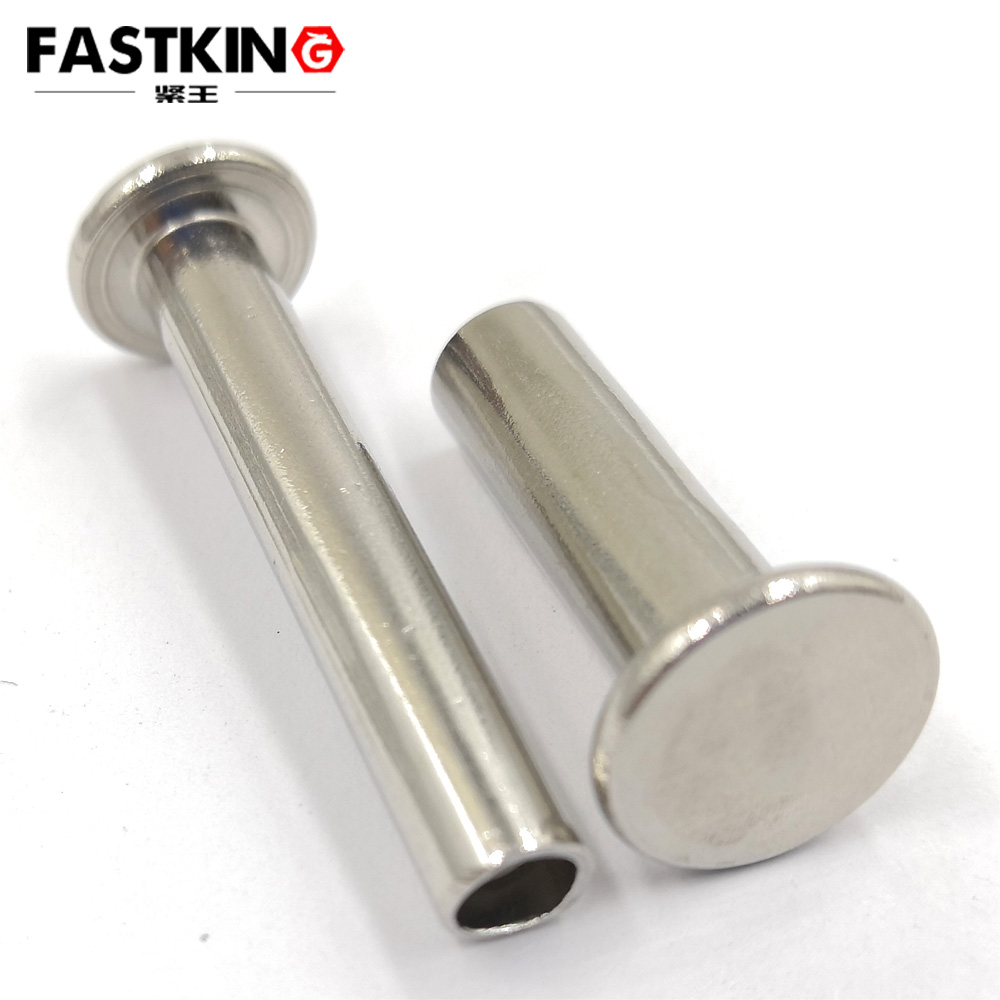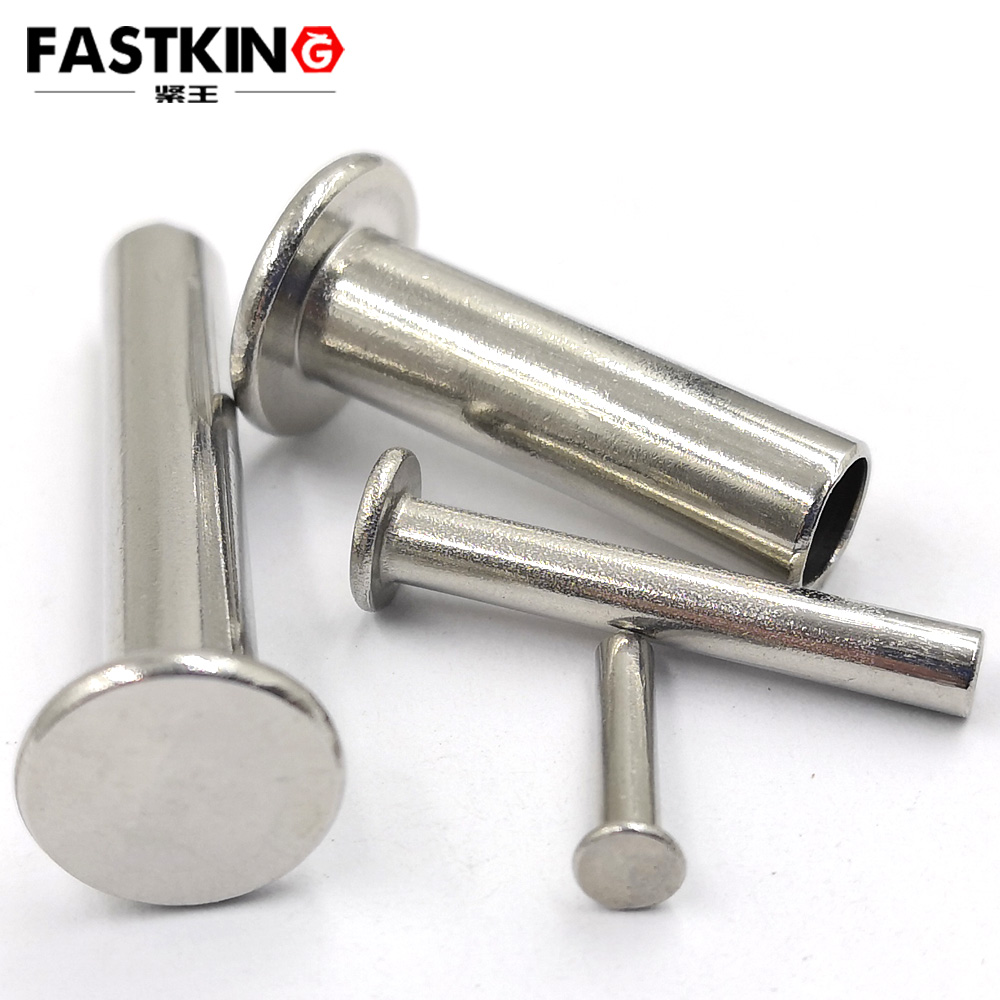Flat head hollow rivets are a common type of mechanical fastener widely used in various industrial fields. They are characterized by a flat head and a hollow shank, typically made from materials such as aluminum alloy or stainless steel. The flat head design allows the rivet to sit flush with the surface of the workpiece after installation, minimizing protrusions and making it suitable for applications where surface smoothness is critical. The hollow structure reduces the weight of the rivet and facilitates easier installation.
II. Usage Methods of Flat Head Hollow Rivets
Preparation
Before using flat head hollow rivets, the following preparations are necessary:
Select the appropriate rivet: Choose the right rivet size and material based on the workpiece material, thickness, and required connection strength.
Prepare tools: Common installation tools include manual rivet guns, pneumatic rivet guns, or electric rivet guns.
Inspect the workpiece: Ensure the workpiece surface is clean, the holes are aligned, and the hole diameter matches the rivet diameter.
Installation Steps
The installation steps for flat head hollow rivets are as follows:Drilling: Drill holes in the workpieces to be joined. The hole diameter should match the rivet diameter, typically 0.1-0.2mm larger than the rivet diameter.
Insert the rivet: Insert the rivet into the drilled hole, ensuring the rivet head sits flush with the workpiece surface.
Install the rivet: Use a rivet gun to pull the rivet's mandrel, causing the rivet shank to expand and form a secure connection. During the pulling process, the rivet gun applies force until the mandrel breaks, completing the installation.
Inspect the installation: After installation, check that the rivet head is flush with the workpiece surface and that the connection is secure.
Precautions
Rivet length selection: Choose the rivet length based on the total thickness of the workpieces. Rivets that are too long or too short can affect the connection quality.
Control installation force: Apply appropriate force during installation to avoid over-pulling, which can deform the rivet or damage the workpiece.
Environmental factors: In humid or corrosive environments, select rivets made from corrosion-resistant materials, such as stainless steel.
III. Applications of Flat Head Hollow Rivets

Automotive Manufacturing
In automotive manufacturing, flat head hollow rivets are widely used for connecting body panels, interior components, and chassis parts. The flat head design ensures a smooth surface, meeting the aesthetic and aerodynamic requirements of vehicles. Additionally, the lightweight nature of hollow rivets helps reduce overall vehicle weight, improving fuel efficiency.
Electronic Devices
Flat head hollow rivets are commonly used in electronic devices for connecting casings, heat sinks, and other components. Their ease of installation and strong connections meet the structural stability and surface smoothness requirements of electronic devices. Moreover, the conductive properties of the rivets aid in grounding and shielding.
Aerospace
In the aerospace industry, flat head hollow rivets are used for connecting aircraft fuselages, wings, and other components. Their high strength and lightweight properties align with aerospace material requirements. Additionally, their corrosion resistance ensures reliability in complex climatic conditions, enhancing flight safety.
Architectural Decoration
In architectural decoration, flat head hollow rivets are often used for connecting curtain walls, ceilings, partitions, and other structures. Their flush installation ensures a smooth surface, maintaining the aesthetic appeal. Furthermore, their weather resistance and anti-corrosion properties make them suitable for both indoor and outdoor environments.
Furniture Manufacturing
In furniture manufacturing, flat head hollow rivets are used to connect metal frames, panels, and other components. Their easy installation and strong connections enhance the structural stability of furniture. The concealed design of the rivets also contributes to the furniture's visual appeal.

Mechanical Equipment
In mechanical equipment, flat head hollow rivets are used to connect various metal parts, such as enclosures and brackets. Their high strength and wear resistance enable them to withstand vibrations and impacts, ensuring the stable operation of equipment.
IV. Conclusion
Flat head hollow rivets are an efficient and reliable mechanical fastener widely used in automotive manufacturing, electronic devices, aerospace, architectural decoration, furniture manufacturing, and mechanical equipment. Their flat head design ensures a smooth surface, while the hollow structure provides lightweight and easy installation. Proper selection and use of flat head hollow rivets can significantly improve connection strength and work efficiency, meeting the demands of various applications.
In practical applications, users should select the appropriate rivet size and material based on specific requirements and follow the installation steps carefully to ensure connection quality and safety. With the continuous advancement of industrial technology, the application prospects for flat head hollow rivets will continue to expand.
